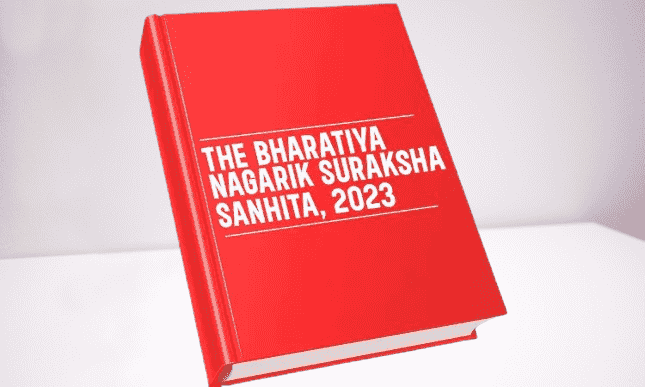Introduction
In Indian jurisprudence, the concept of the burden of proof plays a pivotal role in the administration of justice. It determines which party bears the responsibility to prove or disprove a particular fact in dispute. Governed by the Indian Evidence Act, 1872, this principle is crucial in both civil and criminal cases. The burden of proof lies with the party that asserts the existence of a fact, thereby shaping the course of litigation. This introductory exploration delves into the foundational principles, legal provisions, and judicial interpretations surrounding the burden of proof in Indian law, highlighting its significance in ensuring fair and equitable adjudication.
Meaning of Burden of Proof
The “burden of proof” refers to the obligation of a party in a legal proceeding to prove the claims or allegations they make. In simple terms, it is the duty to present evidence that substantiates one’s assertions in court. This burden is typically on the party that initiates the legal action (the plaintiff in civil cases or the prosecution in criminal cases) and must be met to establish a claim or charge. If the party fails to meet this burden, they risk losing the case.
Who Bears the Burden of Proof?
The burden of proof usually rests with the party making the assertion. For instance, in a criminal case, the prosecution must prove the defendant’s guilt beyond a reasonable doubt. In civil cases, the plaintiff must prove their case by a preponderance of the evidence, meaning it is more likely than not that their claims are true. However, in certain situations, the burden of proof can shift to the other party, especially when specific legal presumptions or defenses are raised.
Principles and Application of Burden of Proof in Indian Law
Principles under the Old Evidence Act (Indian Evidence Act, 1872)
- General Rule (Sections 101-102): Under the Indian Evidence Act, 1872, the party asserting a fact generally bears the burden of proof. This means the person who seeks a judgment in their favor must present sufficient evidence to support their claims. The rule establishes that if no evidence is provided, the party with the burden of proof will fail.
- Onus of Proof (Sections 103-104): The onus of proof shifts during the proceedings depending on the presentation of evidence. Initially, the party making the claim bears the burden, but once they present sufficient evidence, the onus may shift to the opposing party to disprove or counter the evidence.
- Special Circumstances (Section 106): In cases where specific facts are especially within the knowledge of a party, such as in situations involving specific defenses or exceptions, the burden of proof may rest on that party to explain or justify their position.
- Presumptions and Exceptions: Certain legal presumptions can shift the burden of proof. For example, in criminal cases, the accused is presumed innocent until proven guilty. However, if the accused raises a defense, such as insanity under Section 105, the burden shifts to them to prove the defense.
Principles under the New Evidence Act
- Evidentiary Standards and Shifting Burdens: The new Evidence Act proposals aim to refine the standards of evidence, making it clearer when the burden shifts between parties. This includes more detailed guidelines on electronic evidence and its admissibility, which has become increasingly relevant with technological advancements.
- Digital and Electronic Evidence: The new act emphasizes the importance of authenticating digital evidence, which requires parties to prove the integrity and origin of electronic documents. This shift reflects the growing use of digital transactions and communications in legal matters.
- Presumptions of Fact and Law: The proposed amendments seek to clarify the application of presumptions, especially in cases involving modern issues like cybercrimes and financial fraud. This includes explicit provisions on when presumptions can be invoked and the extent of proof required to rebut them.
- Enhanced Clarity on Legal Terms: The new act aims to provide clearer definitions and distinctions between legal terms such as “burden of proof” and “onus of proof,” reducing ambiguity and improving the consistency of judicial interpretation.
Application in Indian Law
The application of these principles ensures that the judicial process is fair and just. In civil cases, the burden of proof determines which party must present evidence to support their claims. In criminal cases, it safeguards the presumption of innocence by requiring the prosecution to prove the accused’s guilt beyond a reasonable doubt. The distinctions and shifting of burdens, as outlined in both the old and new Evidence Acts, are crucial for ensuring that each party has a fair opportunity to present their case, and that justice is ultimately served.
Landmark Case laws
1. K. M. Nanavati v. State of Maharashtra (1962)
In this landmark case, K. M. Nanavati, a naval officer, was accused of murdering his wife’s lover. The prosecution had the burden of proving that the act was intentional and not accidental. Nanavati claimed innocence, asserting that the shooting was accidental and in self-defense. The Supreme Court emphasized that while the prosecution must establish a prima facie case, the burden then shifts to the defense to prove the defense’s assertions, such as provocation or self-defense.
2. State of West Bengal v. Mohd. Omar (2002)
This case underscored the presumption of innocence in criminal proceedings. The Supreme Court reiterated that the prosecution bears the burden of proving the accused’s guilt beyond a reasonable doubt. It highlighted that the presumption of innocence is a fundamental principle, and the prosecution must eliminate any reasonable doubt regarding the accused’s guilt.
3. State of Rajasthan v. Raja Ram (2003)
This case dealt with the burden of proof in dowry death cases. The court ruled that if the prosecution could show that the woman had been subjected to cruelty or harassment before her death, the burden of proof shifted to the accused. The accused had to prove that the death was not caused by any harassment or cruelty related to dowry demands.
4. R. K. Dalmia v. Delhi Administration (1963)
In this case, the Supreme Court discussed the burden of proof in cases involving circumstantial evidence. The prosecution was required to establish a chain of evidence that left no reasonable doubt about the guilt of the accused. The burden was on the prosecution to prove each element of the crime beyond reasonable doubt.
5. Shivaji Sahabrao Bobade v. State of Maharashtra (1973)
This case clarified the concept of “proof beyond reasonable doubt.” The court stated that the prosecution must establish its case to a moral certainty, though not necessarily to an absolute certainty. The prosecution’s burden was to prove the guilt of the accused to the extent that no reasonable doubt remains.
These cases collectively illustrate the application of the burden of proof in different contexts, highlighting its critical role in ensuring justice within the Indian legal system. The burden of proof not only dictates the responsibility of the parties in presenting evidence but also shapes the overall outcome of legal proceedings.
Conclusion
The burden of proof is a fundamental concept in Indian jurisprudence, deeply embedded in the Indian Evidence Act, 1872, and reflected in various landmark judgments. It serves as a cornerstone in both civil and criminal proceedings, determining the responsibilities of parties in proving their claims or defenses.
In essence, the burden of proof ensures that justice is served by mandating that the party making an assertion must substantiate it with adequate evidence. In criminal cases, this principle upholds the presumption of innocence, requiring the prosecution to prove guilt beyond a reasonable doubt. In civil cases, it necessitates that the plaintiff prove their case by a preponderance of the evidence. The shifting nature of the burden, as demonstrated by legal provisions and case law, allows for a dynamic and responsive legal process that addresses various circumstances and complexities.
The proposed amendments to the Indian Evidence Act aim to modernize and refine evidentiary standards, particularly concerning digital and electronic evidence. These updates are expected to enhance clarity and address contemporary challenges in legal proceedings, thereby reinforcing the principle of fair adjudication.
The case laws discussed further illustrate the practical application and evolution of the burden of proof in the Indian legal system. From establishing defenses in criminal cases to addressing nuances in dowry death cases, these landmark decisions highlight the judiciary’s role in interpreting and applying the burden of proof to ensure a just outcome.
Ultimately, the burden of proof is integral to the administration of justice, guiding the presentation of evidence and the adjudication of claims. It upholds the integrity of the legal process, ensuring that every party is given a fair opportunity to present their case and that justice is achieved based on established legal standards and principles.
Also Read:
Rights of undertrial prisoners in India
How To Send A Legal Notice In India













